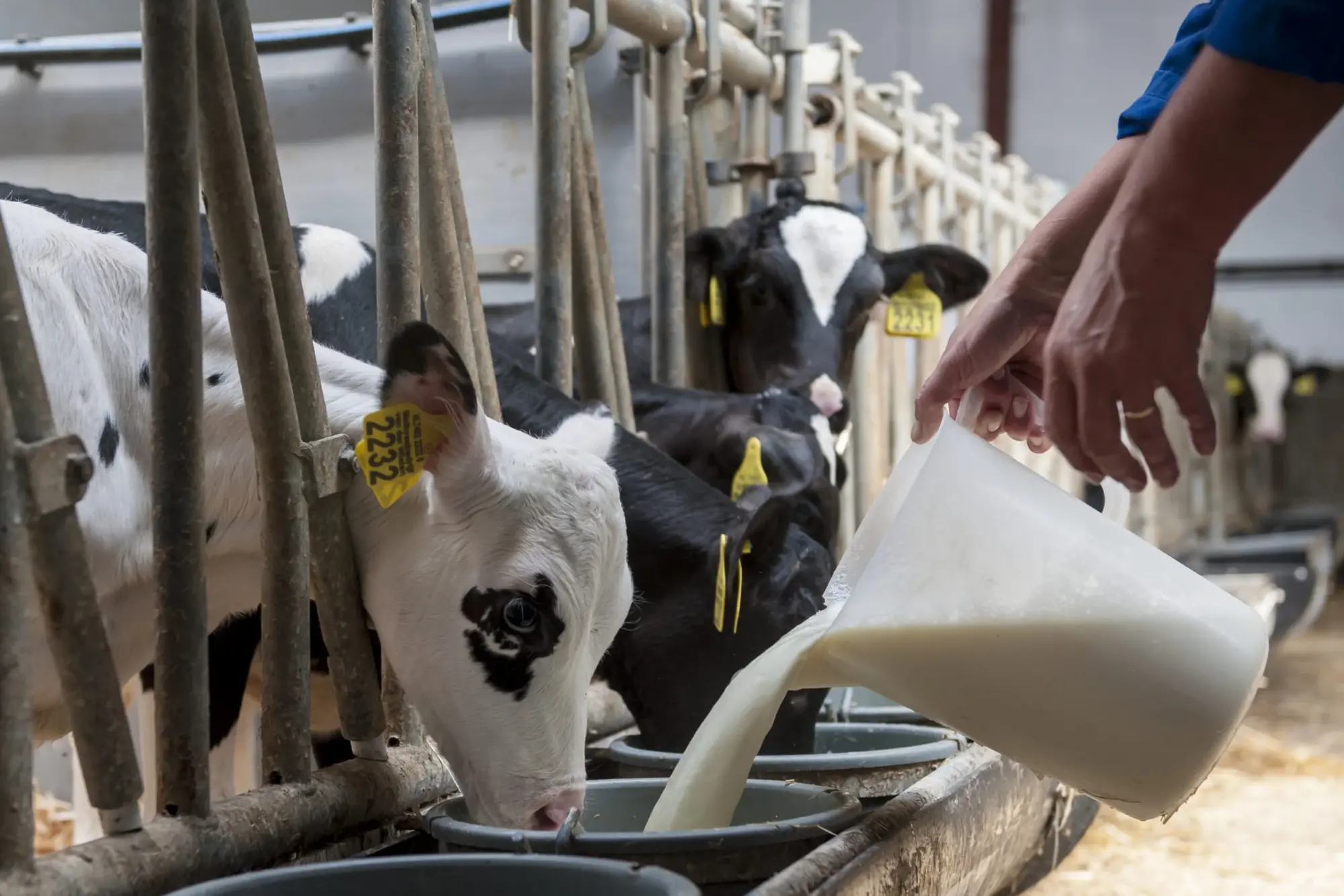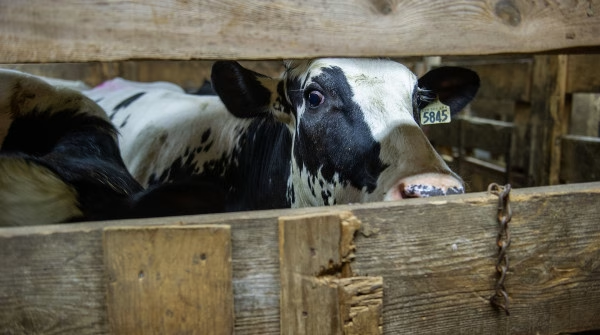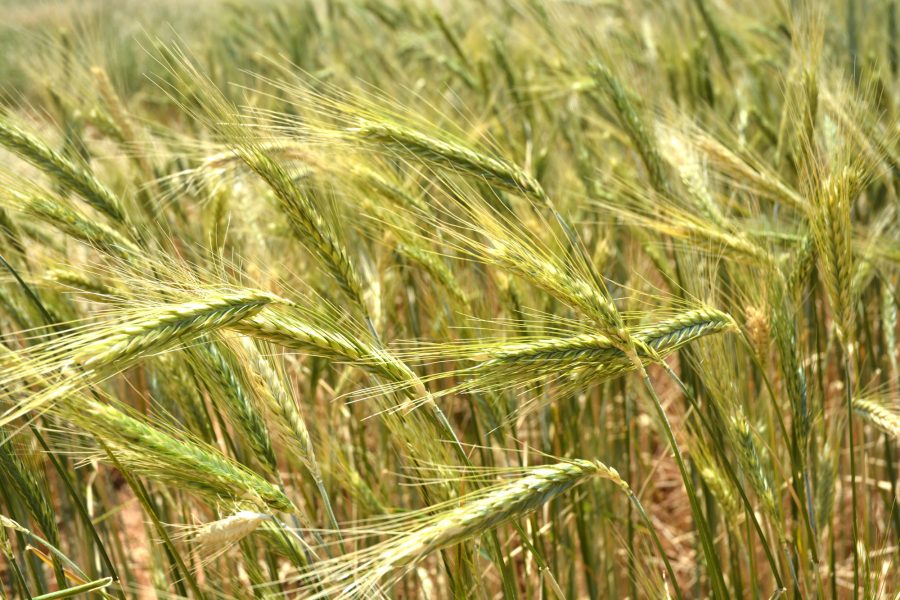Uncover the effects of feed restriction on dairy cow milk production. Get the latest research and practical tips to boost your herd’s output.
Summary: One of the most telling findings from this study is the acute reaction of mTORC1 signaling to decreased nutrient levels, which significantly downregulates within mere hours of feed removal, lowering immediate milk yield and setting off biological changes affecting long-term productivity. As a dairy farmer, it’s vital to ensure a consistent and adequate supply of nutrients to prevent this downregulation. Daily feed intake monitoring and making swift dietary adjustments is a preemptive measure against unintentional feed restriction. Implementing a nutrition management system with real-time tracking or automated feeders and partnering with a livestock nutritionist for tailored plans can ensure nutritional requirements are consistently met, enhancing milk yield, supporting herd health, and improving farm profitability. Remember, a well-fed cow is not just more productive—it’s also a healthier, happier animal.
- Feed restriction in lactating cows leads to immediate downregulation of the mTORC1 signaling pathway, crucial for protein synthesis.
- This acute feed restriction rapidly drops milk yield and increases plasma NEFA levels within 24 hours.
- Over two weeks of restricted feed intake, cows adapt to a new setpoint of lower milk production, demonstrating a 14% reduction in milk yield.
- The reduction in milk production is associated with an 18% decrease in mammary secretory tissue mass and a 29% reduction in CP content.
- After two weeks of feed restriction, no significant long-term changes were observed in markers of protein synthesis or mammary cell turnover.
- Early downregulation of the mTORC1-S6K1 signaling pathway may lead to slower protein synthesis and cell proliferation in the mammary glands.
- Maintaining optimal nutrient supply is essential for sustaining milk yield and overall dairy herd health.
- Farmers should monitor and adjust feed intake promptly to avoid negative impacts on milk yield and mammary gland structure.

Did you know that reducing a cow’s nutrition may cause a dramatic decline in milk output and possibly shrink the size of the mammary gland? It’s a stunning finding with far-reaching repercussions for dairy producers nationwide. Understanding the effects of feed limitation on milk production is more than simply regulating daily output; it is also essential to safeguard your herd’s long-term health and efficiency. Farmers may make better-informed choices about milk output and animal welfare by investigating how dietary changes affect the mammary glands. This insight provides us with new opportunities to improve our dairy operations. Learn why feed limitation is significant, how it influences cows, and how to reduce its effects in dairy farms.
The Role of Nutrients in Milk Synthesis: A Crucial Puzzle to Solve Now
How do nutrients affect milk synthesis in dairy cows? This subject has piqued scientists’ interest for over a century, yet a widely acknowledged explanation still needs to be discovered. In well-fed dairy cows, nutrients such as proteins, lipids, and lactose have negligible mass-action effects on biosynthetic pathways (Akers, 2017). However, recent research has highlighted the importance of the mechanistic target of rapamycin complex 1 (mTORC1) as a critical integrator of nutritional and mitogenic signals. mTORC1 regulates protein synthesis, lipogenesis, and cell development by detecting cellular amino acid levels, energy status, and insulin and IGF-1 signals, which are recognized dietary impacts on milk supply.
Understanding mTORC1 action provides a potential explanation for how dietary nutrients influence the rate of milk component synthesis. When cows get the proper nutrition, mTORC1 activates, promoting the creation of milk proteins and other components, increasing total output. As a result, low nourishment immediately downregulates mTORC1, causing a decrease in milk synthesis—a reaction representing the mammary gland’s adaptability to the cow’s nutritional status.
Decoding the Impact of Feed Restriction on Mammary Function and Structure in Dairy Cows
The study, Feed restriction of lactating cows triggers acute downregulation of mammary mammalian target of rapamycin signaling and chronic reduction of mammary epithelial mass, aimed to evaluate the immediate (<24 hours) and long-term (14 days) effects of severe feed restriction on the signaling pathways and structural composition of the mammary gland in lactating Holstein dairy cows. To do this, researchers separated 14 nursing Holstein cows into two groups, one of which got ad libitum feeding. The second group was fed just 60% of their typical consumption after 16 hours of total feed withdrawal.
This study relied heavily on breast biopsies and blood samples to evaluate changes in mammary gland function and blood metabolites. The biopsies allowed for a comprehensive examination of the mammary gland’s cellular and molecular reactions. At the same time, blood samples revealed systemic metabolic changes in response to feed restriction.
Rapid Response: How Feed Restriction Shakes Up Lactation Within Hours
The cows ‘ reactions were immediate and substantial within 24 hours of feed limitation. The increase in plasma nonesterified fatty acid (NEFA) content was immediately noticeable, indicating rapid mobilization of body fat stores. This physiological response underscores the cows’ immediate struggle to meet the energy needs of lactation in the face of decreased nutritional intake.
Along with this rise in NEFA, there was a noticeable decline in milk production. The cows could not sustain their former milk production levels due to the decreased nutritional supply, demonstrating lactation’s sensitivity to dietary consumption.
At the molecular level, the mTORC1-S6K1 signaling cascade was dramatically reduced. This route is critical for protein synthesis, cell development, and proliferation in the mammary glands. A drop indicates that the cells quickly changed their metabolic activities to prioritize survival over growth and milk production. The repercussions of this transition are severe; within hours, the mammary gland’s ability for milk production was already being reduced, paving the way for long-term adjustments.
Long-term Impact of Feed Restriction: Redefining Mammary Gland Structure and Function Over Time
After 14 days of limited nutrition, we saw significant long-term impacts. The cows showed a considerable decrease in mammary secretory tissue mass, showing that extended feed limitation alters the anatomy of the mammary glands. This decrease generated a new homeostatic setpoint for milk supply, which stabilized at a lower level due to the reduced mammary mass.
Surprisingly, despite the reduced mammary tissue and milk supply, there were no discernible alterations in indicators of protein synthesis or mammary cell turnover at the end of 14 days. This suggests that the mammary glands changed their function and size to accommodate the decreased nutrition without affecting protein synthesis or cell regeneration-related cellular activities.
Feed Restriction: A Hidden Cost With Long-Term Impacts on Your Dairy Herd
As a dairy farmer, you must understand the practical effects of feed limitation on your herd’s milk output. The research found that a 40% feed limitation may instantly reduce milk output, which does not recover even when feed levels are restored. Suppose breastfeeding cows do not get enough nutrition. In that case, their milk output suffers dramatically and may take a long time to recover—if it ever does.
This consistent decline in milk supply is connected to immediate and long-term alterations in the cows’ mammary glands. Within 24 hours of feed limitation, critical signaling pathways that control milk production, such as the mTORC1-S6K1 pathway, are downregulated. What does this mean to you? Well, the capacity of the cows’ mammary tissue to produce milk is damaged virtually immediately and deteriorates over time. Over 14 days, the secretory tissue mass in the mammary glands decreases, resulting in a long-term drop in milk supply.
To prevent these negative consequences, ensure that your lactation cows have an appropriate food intake. Consistent, high-quality feed promotes optimum milk production and protects cows’ health and well-being. Cutting shortcuts with feed might save money in the near run. However, this research demonstrates that the long-term effect includes decreased milk output, which translates to lower income and probably more significant expenditures associated with addressing malnutrition and its repercussions.
Finally, investing in effective nutrition management for your herd is critical. Encourage procedures that guarantee your cows are properly fed and have balanced diets that suit their nutritional requirements. This proactive strategy helps maintain milk production levels while supporting the vitality and productivity of your dairy enterprise.
Nutrient Management: The Keystone of Dairy Farming Profitability
Managing a dairy farm requires balancing nutrition, milk production, and economics. Suboptimal feeding techniques may have an economic domino effect, affecting immediate milk production and long-term herd health and productivity. As we have shown, a 40% drop in feed consumption may lead to a 14% decrease in milk supply. Reducing feed consumption is a cost-effective option, particularly with rising feed costs. However, the more significant financial consequences often surpass the early savings.
Milk output has a direct correlation with revenue in dairy farming. With feed limitation, the drop in daily milk supply results in severe income losses. For example, if a dairy cow produces 33 kilograms of milk daily, a 14% decrease saves around 4.6 kilos per cow daily. Given the size of activities, a moderate herd of 100 cows may lose 460 kg of milk daily. When accumulated over weeks or months, the financial effect becomes apparent.
Furthermore, as previously stated, the chronic decline in mammary epithelial bulk and secretory tissue indicates a longer period of decreasing milk supply. This impacts short-term income and presents a barrier in scaling back up to ideal production levels once additional feed is provided. Farmers may pay extra fees for supplements and veterinary treatment to recover the production of their herds.
It’s also vital to examine the unintended consequences of decreased animal health. Prolonged feed restriction may cause ketosis, reduced fertility, and greater susceptibility to illnesses, requiring more medical intervention and labor expenditures. Farm management techniques may be stressed, resulting in inefficiency and increased operational expenses.
A comprehensive method that considers the trade-offs between feed costs and milk output is required to sustain profitability. Precision feeding methods and frequent nutritional monitoring of the herd may assist in making educated choices that benefit animal welfare and economic health. As a seasoned dairy farmer, Paul Harris correctly states, “Feed is the gasoline that powers our business. Compromising may save a cent now but cost a dollar tomorrow” [DairyFarmingToday.org].
Finally, the objective should be to create a sustainable equilibrium that optimizes milk production while reducing expenditures. Investing in clever feed methods may be the key to survival and success in the competitive dairy farming sector.
Actionable Tips for Monitoring and Adjusting Feed Intake in Dairy Cows
- Regularly Monitor Body Condition Scores (BCS): Maintain a BCS of 2.5 to 3.5 to ensure cows are neither underfed nor overfed. Significant variances may suggest an imbalance in feed consumption.
- Track Dry Matter Intake (DMI): Measure daily DMI to ensure cows are getting adequate nutrients. Aim for a DMI of around 3-4% of body weight.
- Analyze Milk Yield and Composition: Regularly check milk fat, protein, and lactose levels. Sudden changes might indicate insufficient nutritional intake.
- Monitor Rumination and Chewing Activity: Use sensors or watch cows to ensure they meditate correctly. Healthy cows spend around 450-500 minutes each day meditating.
- Check Manure Consistency: Examine dung for consistency and undigested feed particles. Poor digestion may suggest nutrient deficits or imbalances in the diet.
- Adjust Rations Based on Stage of Lactation: Customize feed regimens to meet the nutritional demands of cows at various lactation phases, ensuring that high-producing cows get enough energy and protein.
- Utilize Technology for Precision Feeding: Implement automated feeding equipment and software to monitor and modify feed supply and intake accurately.
- Please consult a Nutritionist: Regularly work with a bovine nutritionist to optimize feed formulations and verify that they suit the cows’ nutritional needs.
- Observe Cow Behavior and Health: Monitor behavioral changes, such as reduced activity or feed intake, since these might suggest health concerns impacting nutritional absorption.
The Bottom Line
The work shows how feed restriction abruptly alters mammary gland function and structure, reducing milk output. Significant biochemical changes occur during the first few hours after feed withdrawal, including downregulation of mTORC1-S6K1 signaling and lower expression of protein synthesis indicators. Over time, these changes result in a persistent drop in milk supply and a reduced mammary epithelial bulk.
Understanding these systems is critical for dairy producers who want to maximize milk output and keep herds healthy. The shift to a new setpoint of decreased milk output highlights the long-term effects feed limitation may have on your dairy herd.
Consider this while evaluating your feed management strategies: what impact may long-term undernutrition have on your dairy business’ productivity and health? Effective feed management is more than simply addressing current demands and ensuring future production.
















